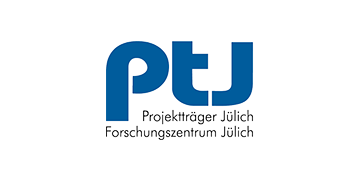| Theme | Industry 4.0, XXL products |
|---|---|
| Project title | Use of wireless communication technology for economic condition monitoring of marine gearboxes (DriveCoM) |
| Project duration | 01.04.2013 – 31.03.2015 |
| Video | |
| Download | |
| Press release |
Publications about the project
The introduction of continuous condition monitoring of machinery and equipment is associated with obstacles, especially for retrofits in the maritime sector. Sensor networks in conjunction with wireless, energy-autonomous sensor nodes completely avoid the cabling effort for energy supply and data transmission, so that the sensors for measuring value acquisition can be integrated with a single installation effort. Energy Harvesting systems allow the sensor nodes to be supplied with energy from the immediate environment.
The aim of the present work is therefore to develop a model that enables the energetic design of wireless, energy self-sufficient sensor nodes for condition monitoring of machines and plants.
wireless sensor network, energy harvesting, energy-independent sensors, condition monitoring
The condition-based maintenance of a marine gearbox poses special challenges because of the inaccessibility to the hull of the ship and harsh environment in the form of higher temperatures, continuous vibrations and salty sea air, which can lead to corrosion. In this article, the integration of a wireless sensor network with a marine gearbox is shown. The integration consists of sensor nodes that record characteristic measurement data, send them actively to a receiving unit and harvest energy from the environment for electrical supply after a one-time installation expenditure. The developed sensor node has a thermoelectric power supply that allows measurement intervals of less than 20 minutes. The recorded vibration data from the gearbox surface are sent via ZigBee wireless technology. By evaluating the envelope spectrum of the measured vibration data, the current rotational speed of the input drive shaft could be identified.
energy harvesting, thermoelectric generator, wireless sensor network, condition monitoring
The integration of a wireless sensor network at a marine gearbox provides the opportunity to have a one-time expense of installation. The wireless sensor network consists of sensor nodes, which record characteristic measurement data, send them actively to a receiving unit and harvest energy from the environment for electrical supply. By evaluating the envelope spectrum of the measured vibration data, an artificially generated bearing damage could be identified.
sensor nodes, energy harvesting, condition monitoring, marine gearbox
This article presents a solution for the thermoelectric power supply of wireless sensor nodes for condition monitoring of marine gearboxes. Among the different ambient energy sources in marine gearboxes, frictional heat has been identified to be appropriate to thermally power a thermoelectric generator (TEG). The such generated electricity may power wireless sensor nodes for detecting temperature, vibration, torque and rotational speed. Requirements for a corresponding energy supply are formulated, constructive solutions are presented and thermal simulations and practical experiments are reviewed. The results are evaluated and a solution is selected for further implementation, which provides for an actively cooled TEG in the area of the ship gearbox’s heat exchanger. This can provide continuous electrical power of up to 14 mW, thus supplying the planned sensor nodes. The disadvantage of this solution is that a comparatively extensive mechanical modification, for example, to the oil and cooling water pipelines is required.
energy harvesting, thermoelectric generator, wireless sensor nodes, thermal simulation, condition mo
As a highly-loaded element between the diesel engine and propeller installation, the marine gear has a special significance with regard to the reliability of the entire ship propulsion. Together with project partners from industry and research a condition monitoring system has been developed by the IPH, to prevent failures. The peculiarity of the system is the wireless and self-powered operation.
condition monitoring, wireless sensor nodes, microcontrollers
The lecture introduced IPH – Institut für Integrierte Produktion Hannover gGmbH with its three fields of activity: forming technology, logistics and automation technology. Furthermore, research and consulting projects were discussed. In addition, Industrie 4.0 was presented as a major focus of current research.
industrie 4.0, automation technology, logistics
Data analysis on a microcontroller in the immediate vicinity of the measuring point creates an intelligent sensor node that enables a condition prognosis of gearbox components. The IPH compares different approaches of analysis regarding computing time and energy consumption in order to minimize the effort of wireless data transmission.
condition monitoring, wireless sensor nodes, microcontroller






